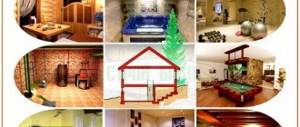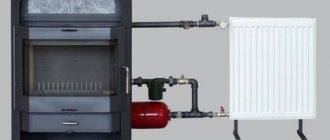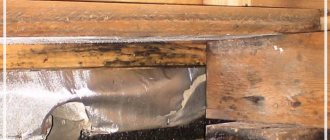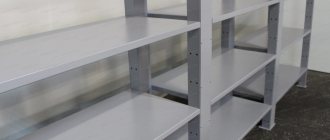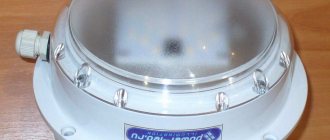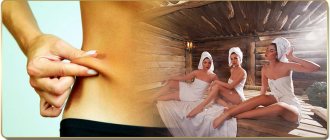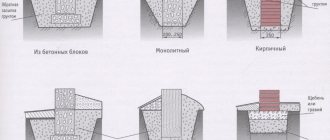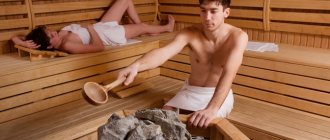What does it mean to use a water bath at home?
This is discussed in our article. The key word here is “water”. Those. We heat the product or substance we need not with fire, but with water. The fact is that water boils at a temperature of no more than +100°C. At this temperature, the products that we need to heat in a water bath do not burn, they warm up more slowly and evenly, while retaining all their beneficial substances.
Honey, gelatin, chocolate, propolis, wax, paraffin, lard, soap are usually melted in a water bath. These substances are often used to prepare homemade masks and wraps.
It is also very good to brew herbs in a water bath; herbalists highly recommend this method of brewing as the most effective.
Therefore, if the recipe clearly states to melt or brew in a water bath, we strictly follow this instruction. How to make a water bath at home? What kind of dishes or pots are needed for a water bath?
There is nothing complicated here. Just take 2 pans of different sizes - larger and smaller. The smaller saucepan should fit completely, like a nesting doll, into the larger saucepan. By the way, instead of a large saucepan, you can use a basin or large bowl.
Warm floor in the bathhouse film
In this case, ready-made tapes with thin graphite strips printed on top of plastic are used to heat the floor covering, performing the functions of a low-voltage heating element.
To install the underfloor heating strips, you need to spread them on a special heat-insulating substrate, cut to length and secure with heat-resistant tape. Each tape is connected to two electrical wires with copper clamps, after which all contacts are insulated with mastic.
If the floor is laid in a recreation room, then it will be enough to lay a waterproof laminate on top of the heating tapes. For the remaining rooms of the bathhouse, the film heating system is filled with a polymer concrete screed for further laying of ceramic or tiles.
The thermostat and temperature sensor system makes it possible to very accurately maintain the degree of floor heating, so the film is often laid not only in the “inhabited” areas of the bathhouse, but even at the entrance to the room, on the covered terrace and in the locker room. Electricity consumption is noticeably lower than in the case of cable systems, so heated floors can be used in most rooms of the bathhouse, except for the steam room and places adjacent to the heater.
Film heated floors are ideal for a washing room; the thickness of the screed under the tiles is only 30-50 mm, taking into account waterproofing.
The disadvantage of the system is low heat generation. The film can be used without restrictions for washing or heating the floor in the living room of a bathhouse, but its capabilities will not be enough as a heating system. Another disadvantage is that film heating requires careful handling and easily breaks down at the installation stage.
Water bath dishes
- What kind of dishes should I use for a water bath? As for a large saucepan (or basin), there are no special requirements, the main thing is that it be metal.
- A small saucepan can also be made of any metal, except when we are brewing herbs. To brew herbs, use enamel or glass containers.
Selecting dishes
Healing essential oils for baths and saunas
Healing essential oils for baths and saunas
I would immediately like to say that absolutely all essential oils for baths and saunas can be classified as medicinal. All of them, in one way or another, have a beneficial effect on the body. Therefore, you need to choose them taking into account what ailment you want to overcome.
List of medicinal essential oils for baths and saunas:
- Eucalyptus, mint, pine, juniper and rosemary oils have pronounced antiseptic properties. Most often they are used to eliminate cold symptoms, as well as to relieve inflammation in the upper respiratory tract.
- Geranium, lemon, orange, myrrh and lemon verbena oils should be used to combat migraines and common headaches. Also, these natural mixtures are very good at eliminating vasospasm.
- Fir, cedar, chamomile, celandine, sage and yarrow oils fight skin problems very well. So, with their help you can get rid of eczema, psoriasis, and also stimulate regenerative processes that promote the healing of various wounds and scratches.
IMPORTANT: However, you must remember that you should be careful when visiting a bathhouse or sauna if you have these problems. Eczema should be subsiding and cuts and scrapes should not be very inflamed.
- Oil of tuberose, cajuput, nutmeg, angelica and verbena will help get rid of waste and toxins that are in the human body. It is especially useful to use them in baths and saunas after serious illnesses. Such aromatic mixtures, helping to cleanse the body of harmful substances, stimulate increased immunity and, as a result, a person recovers much faster.
How to heat in a water bath?
- It’s very simple - you need to put a wooden circle or a small plank on the bottom of a large pan.
- Then carefully pour water into a large bowl. This is a very important point. There is no need to pour too much water into a large saucepan.
- The water level should reach approximately halfway up the height of the small pan.
- Then we load the product we need into a small saucepan and cover with a lid. Where required by the recipe, add water to the product.
- We wait for the water to boil in a large saucepan, then reduce the heat to the temperature recommended in the recipe. Place a small saucepan in a large one. We warm up for the required time.
If you find it difficult to cook in a water bath using the method that we have described, we can advise you on special devices for a water bath at home, which are sold in the store. In particular, you can use an electric Herbalist to brew herbs.
And now more about how to heat various products in a water bath.
How to properly make a heated floor in a bathhouse
First of all, you will need to take care of waterproofing and insulating the foundation. If the water is very close to the surface of the soil, then it is best to pour a monolithic screed with a thickness of at least 100 mm into the base of the bathhouse. An electric heated floor turns out to be quite sensitive to the appearance of condensation, and often it is condensed water and moisture from the ground that causes heating systems to fail.
It may seem that pouring a powerful concrete slab is an excessive solution, both in terms of strength and insulation, but practice confirms the opposite. It is the concrete base that guarantees the durability of the heated floor in any climatic conditions.
How to melt honey in a water bath?
Honey has excellent anti-aging properties, so it is often included in anti-aging homemade masks.
But honey tends to become sugary and hard. You cannot apply solid honey to your skin or hair; it must be heated - then it will become liquid again.
Liquefying honey
To heat honey in a water bath, heat a large pan of water to a boil, then reduce the heat to low. Then put a small saucepan with honey in a large one with water. Stirring constantly, melt the honey in a water bath; as soon as the honey becomes liquid, immediately remove the saucepan with honey from the water bath.
Do not heat honey above +50-60°C. When heated at higher temperatures, honey loses all its beneficial properties.
Features of installing the system in wet rooms
A water floor in a bathhouse is more difficult to install, unlike infrared or electric heating systems. The following rules must be followed :
- Place outlets in the place where you plan to install the water collector. Usually this is the waiting room. Before pouring the screed, the taps are brought as close as possible to the place where the heat supply will come from.
- Before starting construction, you need to prepare a water floor heating project in order to take into account all the details: correctly position the heating elements, and avoid mistakes when calculating power.
- There is usually no possibility of adjusting the temperature of the floors. Intensive combustion, especially if heating is carried out with an iron stove, gives a high base temperature (about 80–90 degrees). You cannot walk barefoot on such a surface; Attention
The problem of hot floors is solved by installing equipment. A special mixing unit or manifold is purchased. It automatically regulates the heating of the coolant and turns off the heating system, for example, in the summer, when additional heating is not needed.
- It is difficult to install thermal insulation for water heating. This part is very expensive, many homeowners save. This should not be done, as the floor may freeze without proper insulation. Lack of thermal insulation leads to large heat losses.
Gelatin in a water bath
You can make luxurious face and hair masks from gelatin (see the list of recipes for gelatin masks here).
To prepare masks, we need liquid gelatin. And in stores it is sold either in powder form or in the form of plates. To make gelatin liquid, you need to dissolve it in a water bath.
Gelatin powder (or plates) must first be filled with water in a ratio of approximately 1 tbsp. l. dry gelatin for 2 tbsp. l. water. Mix everything. Allow to swell for the time indicated on the gelatin package.
Then put the swollen gelatin in a small saucepan and place it in a large saucepan with water. Bring water to a boil in a large saucepan, then reduce heat and melt the gelatin until liquid, stirring constantly.
Diagram of cable laying in the base of a heated floor
The cable heater in the bathhouse is always laid in a “snake”. On the one hand, this simplifies installation, on the other hand, this scheme makes it possible to equalize the heating of the heated floor. In a steam room or washing room, the heating wire is embedded in the screed, resulting in a thick floor, 50-70 mm thick.
For a rest room or dressing room with wooden floors, installation is carried out on a fiberglass or, in extreme cases, metal mesh with reflective insulation made of aluminum foil.
In this case, the mesh is laid on a layer of mineral wool, and the cable should not touch the thermal insulation, otherwise the polymer sheath with the heating wire may melt. For the same reasons, you cannot attach wires to wooden floor parts.
A two-core cable can be used for heating; in this case, the end of the wire is simply closed with a contact plug. For single-core systems, you will additionally need to lay a ground and ground wire. In both cases, a temperature sensor of the thermal control system is built between the turns.
How to brew herbs in a water bath?
As mentioned above, a water bath for brewing herbs is of the highest quality. For any infusions and decoctions of herbs, you should only use glass or enamel containers.
Prepare 2 pans for a water bath. Fill the larger one with water and let it heat up. Place the herbs or other plant materials you need in a small saucepan. Pour boiling water over the herbs at the rate of 1-2 tbsp. l. dry herbs for 1 cup boiling water.
Place a small saucepan of herbs in a larger saucepan of boiling water. Reduce the heat slightly and simmer the herbal decoction in a water bath for about 20 minutes.
Soothing essential oils for baths and saunas
Soothing essential oils for baths and saunas
As you probably already understood, essential oils for baths and saunas can be used for various purposes. If you go to the steam room to calm the nervous system, then remember that in this case it is best to use one-component mixtures. As practice shows, they have a more effective effect on the body than the simultaneous use of several oils at once. Thanks to the right composition, you can get rid of insomnia, excessive anxiety, and prolonged depression.
Also, oils with calming properties can be used by people with severe physical and mental fatigue. If a person experiences similar problems, then due to stress he experiences vasospasm and, as a consequence, problems with the heart and nerves. Soothing essential oils for saunas and baths, normalizing the nervous system, very quickly relieve all other associated symptoms.
List of soothing essential oils for baths and saunas:
- Vanilla
- Sandalwood
- Orange
- Melissa
- Jasmine
- Patchouli
- Basil
- Lavender
Cottage cheese in a water bath
- Kefir or curdled milk - 1 l
Preparation:
- If you decide to ferment the milk first, then add a spoonful of fermented milk product (kefir, sour cream, yogurt) and leave until thickened. Can be covered or placed on a radiator.
- If you use kefir, just pour it into a jar.
- Line the bottom of the pan with a cloth.
- The jar should be almost completely filled into the pan. Leave 5-7 cm above cold water.
- Place the pan over medium heat.
- Immediately after boiling, turn off the heat.
- Cover the saucepan with a bowl and leave to cool.
- Strain carefully. The original amount of liquid will yield approximately 200 g of cottage cheese.
Homemade cottage cheese
Step-by-step installation instructions
Before installing the cable, you must select a place on the wall of the bathhouse to install the thermostat. If the heated floor is installed in a damp room, for example, in a steam room or sauna, or in a washing department, then the location for the control device is chosen in the dressing room or in the relaxation room. In other cases, it is enough for the box to be on the wall of the bathhouse at a height of at least 30 cm. This is done in order to exclude the influence of warm air on the control electronics.
Wiring installation
From the thermostat installation point you will need to cut two grooves - grooves. The first is needed to connect the underfloor heating cable, the second is used to lay the electrical network from the installation site of the bath meter to the heat regulator. In both cases, a two-core copper cable is used, laid in a plastic corrugation. The cross-section should be in the range of 1.5-2.5 mm2, this is enough to connect a heated floor with a power of 4.1-5.9 kW.
Preparing for cable installation
Next, we treat the rough surface with a primer for better adhesion to the screed material and apply cable laying markings. The snake will have to be at least 50 mm away from the walls of the bathhouse.
The next step is to lay reflective thermal insulation based on aluminum film and polyethylene foam. The panels are spread on the floor of the bathhouse and glued at the joints with heat-resistant tape.
The cable heater must be fixed to the mounting tape, otherwise during the process of pouring screed or laying tiles, the wire will move and the system will burn out.
Cabling
Before installing the heating wire, you will need to attach adhesive tape; it is fixed with dowels through the reflective layer to the plasterboard base. The distance between the strips is chosen within 0.5-1.0 m.
Wire laying begins from the point where the wire is connected to the thermostat. The cable is laid out like a snake, strictly observing the pitch between the individual sections recommended by the manufacturer. The wire is fixed to the mounting tape with bent tendrils - clamps. We plug the two-core wire on one side, the single-core wire is connected to the thermostat through an additional piece of wire.
We put the temperature sensor in a plastic corrugation, plug it with a plug, place it between parallel sections to a depth of 50 cm and connect it to the thermostat.
All that remains is to fill the floor of the bathhouse with self-leveling screed and, after the surface has dried, prepare it for laying tiles or floorboards. If the heating system is installed in the washing compartment of the bathhouse, then you will first need to install beacons and, after pouring the solution, plan drain slopes to the installation site of the drain or bellows.
Water bath for chocolate
We need chocolate not only for cooking, but also for our beauty. Chocolate, for example, can be used to make wonderful masks or body wraps.
For these purposes, we need chocolate in liquid form. To get liquid chocolate you need to make a water bath for it.
- First, break the chocolate into small pieces and then place it in a small saucepan. You can add a few drops of water to the chocolate.
- Then place a small saucepan with chocolate in a large one with boiling water, and, stirring continuously, bring the chocolate to a liquid state in a water bath.
What it is?
The design principle is to transfer heat through an “intermediary”.
The first container filled with water is heated over an open fire.
In a container of smaller diameter placed in it, the contents are heated by the temperature of the hot water surrounding it - that same “intermediary”.
Since boiling water is physically unable to heat up above + 100 °C, the temperature in a small container, naturally, will also not exceed this figure.
Here, nothing will burn a priori - contact with open fire is excluded.
This principle is widely used in the food industry. This is exactly how pasteurizers for milk and canned foods work. The water “jacket” of cheese machines transfers strictly limited heat to the cheese mass during the preparation of some gourmet types of cheese.
But you, too, have probably pasteurized jars of homemade preserves in boiling water more than once? This simple procedure is also a water bath.
Cream in a water bath
Protein cream can also be prepared in a water bath. It will even be a protein custard in a water bath, to be more precise.
Take:
- 3 raw proteins
- 150 g sugar
- half a teaspoon of citric acid
- half a packet of vanilla
Further:
- Whisk all ingredients thoroughly in a small saucepan.
- Place it in a large saucepan of boiling water. Make sure that their bottoms do not touch.
- Beat the cream in a water bath for 10 minutes until it becomes very thick.
- Remove the saucepan from the water and whisk the cream for a couple more minutes.
- The gorgeous white thick cream for the cake is ready.
Cream
Floor installation and preparation
Before laying the cable, you need to insulate the slab; to do this, lay a layer of penoplex or any extruded polystyrene foam on top; the thermal insulation layer must be at least 50 mm. The next step is waterproofing in two layers, usually a layer of mastic is applied to the insulation and a thick polypropylene film is glued. The seams can be soldered or sealed with heat-resistant tape.
Before laying the cable, the floor must be insulated and covered with a layer of waterproofing
The next step is to lay a layer of moisture-resistant plasterboard, seams and joints between the edges and around the perimeter of the room are sealed with silicone sealant. The edges are trimmed and the cable can be laid.
Oil in a water bath
Heating the oil in a water bath is very simple. Take 1 kg of oil and do the following:
- Cut the butter into small pieces.
- Place the oil in a water bath for an hour and a half.
- We take the coagulated protein that will collect on top into a separate container. This is a great addition to porridges and pancakes. But its shelf life is not long.
- If the butter is not homemade, then it is better to throw away this protein foam. But there will be more benefits from a homemade product.
- After the specified time, strain the ghee from the sediment. This pure product can be stored for up to 10 months. And it will become a useful addition to your kitchen.
Disinfecting essential oils for baths and saunas
Disinfecting essential oils for baths and saunas
Similar essential oils for baths and saunas are used at the very initial stage. They are used to disinfect the air in the steam room, as well as cleanse people’s breath. Another feature of this group of oils is their maximum effect on the skin.
Once in the hot steam, they begin to intensely affect the dermis, due to which all the pores open. This ensures that during a massage, using a broom, or simply while in a steam room, the body absorbs beneficial substances from essential oils to the maximum extent.
List of disinfecting essential oils for baths and saunas:
- Eucalyptus
- Oregano
- Mint
- Cedar
- Juniper
- Tea tree
IMPORTANT : We must remember that absolutely all bath and sauna oils have several beneficial properties. They can simultaneously disinfect, tone, and have a stimulating and restorative effect. Therefore, when choosing a composition for a steam room, make sure that it contains the right oils. So, if your goal is complete relaxation, then you better avoid stimulating oils.
Water bath for wax
Wax is a natural product that is included in many cosmetic products. But add it to homemade cream, mask, lipstick, etc. only available in liquid form. To acquire a liquid consistency, you need to melt the wax in a water bath.
A water bath is made for wax in the same way as for honey. Water is never added to wax. Stirs continuously.
Melt the wax
What is it and how does it work?
This technology is used in many areas where something needs to be prepared. This could be cooking, making medicinal infusions, or cosmetics.
The principle of the method is simple: water is taken into a larger container and brought to a boil on the stove; when it boils, a smaller container is placed in it and the required product is prepared in it. It turns out that it is heated evenly at a constant temperature of 100 degrees.
This is the most useful processing method; products do not burn, do not stick to the walls, and retain maximum beneficial properties.
This is how it is usually prepared:
- Creams for cakes;
- Sauces;
- Melt chocolate, honey, wax;
- Medicinal herbal teas.
If you often have to resort to this cooking method, buy yourself a special unit, and these are now on sale. However, it will take up extra space in the kitchen and is not cheap, but the result is the same as from ordinary pans. So think before you spend money on it.
Lard in a water bath
Few people know that lard is a gift from nature for our beauty. It perfectly softens and nourishes the skin. Therefore, beauty recipes with lard are not a joke, but ideal care, especially for dry or rough skin.
But raw lard is not suitable for cosmetic purposes; it must be melted in a water bath.
- First, cut the lard into very small pieces - the smaller the better.
- Pour the lard into a small saucepan and place it in a large saucepan of boiling water.
- Reduce the heat slightly and wait until the lard is completely melted.
Design diagram
Water floor arrangement for a bathhouse:
- Subfloor . Laying on a concrete or wooden base.
- Waterproofing layer . Important for preventing condensation from accumulating in the pores of the floor and between layers.
- Insulation . Reduces heat loss. It is important to install quality materials.
- Reinforcement mesh . Needed to protect insulation.
- Foil reflector . Directs heat in the right directions, helping to distribute it evenly around the perimeter of the bath.
- A heating element . The pipes are laid in a certain order. The best way is to lay it in a spiral.
- Concrete screed . The screed should be poured with a slope in the direction of the drain.
- Finish coating . The evenness of this surface must be perfect.
Important
Pipe diameter - 16 mm. The length of the contour is 80 m, the maximum allowable is 100 m. The thickness of the insulation should not be less than 10 cm, and the mesh should not be less than 4 mm. Only these parameters ensure ideal heating of the floor surface and the entire room, including the corners and ceiling.
The photo shows a diagram of a water floor in a bathhouse:
Tonic essential oils for baths and saunas
Tonic essential oils for baths and saunas
Tonic essential oils for baths and saunas are needed if you need to cheer up after hard mental or physical work. Once the steam enters your respiratory tract, it will begin to stimulate a surge of vitality and the person will begin to feel rested and invigorated.
The stimulating and refreshing properties of natural mixtures help achieve this effect. Once in the body, they first of all calm the nervous system, thanks to which the cardiovascular system returns to normal, which, due to internal overstrain, began to work for wear and tear.
IMPORTANT: These essential oils should be used for baths and saunas only in the first half of the day or at least four hours before bedtime. Since they invigorate the body very well, you will end up sleeping poorly or not being able to fall asleep at all. They should also be used carefully for health procedures by people who experience surges in blood pressure.
List of tonic essential oils for baths and saunas:
- Bay
- Carnation
- Lemon
- Nut
- Cinnamon
- Palmarosa
- Citronella
- Fir
- Ginger.
Methods of application
There are several ways to use essential oils in a steam room:
- using aromatic water: 5–7 drops of oil are added to 300 ml of water poured into a metal container with a wide neck and placed on the heater;
- applying oil to the walls of the steam room, for this a few drops of oil are spread over the surface with strokes, preferably closer to the floor, the temperature there is lower, the oil will evaporate more slowly;
- splashing aromatic water on the heater, the steam is distributed throughout the steam room, carrying with it particles of ether.
Volatile substances contained in ethers easily penetrate the body through breathing and open pores; such methods are equally effective both for treating diseases and for aromatherapy and improving the condition of skin and hair.
To dissolve the oil in water, you need to use some kind of emulsifier. That is, the ether is first added to a teaspoon of sea salt or honey, and then dissolved in water. The same mixture can be added to the water for steaming a broom, then the benefits of its use will increase several times.
Essential oils can also be used depending on the time of year. In winter, it is better to use esters that have a bactericidal effect to prevent seasonal diseases, for example, coniferous ones, and in summer, oils with refreshing and tonic effects, such as citrus fruits, are suitable.
Some oils combine well with each other, enhancing each other’s actions:
- to remove waste and toxins from the body: four drops of lemon and juniper esters, 2 drops of sandalwood;
- for weight loss and cellulite elimination: five drops of juniper and tangerine esters and seven drops of lemon;
- for a calming effect and elimination of nervousness: three drops of ylang-ylang and orange esters, five drops of bergamot;
- to improve immunity: five drops of spruce and eucalyptus esters, three drops of peppermint;
- to improve the condition of the skin and heal the skin: three drops of lemon and rose esters, four drops of lavender.
Essential oils should never be dropped onto hot stones, as they are flammable.
Bath massages
Another great way to heal your body is bath massages using essential oils. They are done in two main ways:
- using a bath broom. This device has been popular since time immemorial: most often steamed with birch, but there may be other options: oak, fir, linden and others. The broom is soaked in water with the addition of a few drops of essential oil or a mixture of oils dissolved in an emulsifier. A proper massage begins with stroking from the feet to the head, in the opposite direction on the sides, then with patting movements throughout the body. The use of a broom increases blood circulation, the skin becomes more receptive to essential oils, in addition, with the help of the wind, hot steam, saturated with the beneficial elements of the ether, is drawn to the body. This massage will help get rid of many diseases;
- classic oil massage. A base oil is used as a base; it can be olive, jojoba, grape seed or any other. Essential oil is added to it at the rate of 3-4 drops per 10 ml. oils It is better to prepare the massage mixture immediately before use, but if this is not possible, you can add a few drops of an oil solution of vitamin E; it will inhibit the oxidation of beneficial substances. The mixture is applied to the skin. In this case, the movements can be very diverse: pressing, point-like, stroking. If the purpose of the massage is to combat cellulite, gentle pinching movements and the use of massage jars or gloves will be useful. Which essential oil to add depends on the purpose of the massage. Classic massage is an ideal option for improving skin condition, combating excess weight and treating skin diseases.
Massage with a bath broom is a very useful and pleasant healing bath procedure.
Rules for using essential oils in the bath
For proper use of oil in the steam room, you should pay attention to the following recommendations:
- Any essential oil can cause allergies, so it is very important to check for individual reactions to it before visiting a bath or sauna. In addition, here the body is in unusual and even extreme conditions of high humidity and temperature, which means it is more vulnerable to the effects of substances. To do this, a drop of ether diluted in base oil is applied to the inner bend of the elbow or the aroma of the oil is inhaled. If redness, itching, or sneezing occur, you should not use the oil. You should also pay close attention to your odor tolerance. The bathhouse is a place of rest and relaxation, and everything should bring only pleasure. If you don't like the scent, it's better not to use it;
- essential oils have a number of contraindications for use, you need to read them very carefully;
- the first time you need to add three to four drops of essential oil to a liter of water, and inhale its vapors for no more than two minutes; if the body tolerates the ether well, you can increase the concentration of the substance and the duration of the procedure;
- Before pouring water with essential oil onto hot stones, you need to pour clean water over them to lower their temperature;
- You should not use essential oils in a bath more than once a week.
Before visiting a bath or sauna, you should definitely get acquainted with essential oil, this way you can protect yourself from individual reactions of the body in unusual conditions
Examples of essential oils and oil blend recipes
In the bath, mixtures of various essential oils are often used, which enhance the effect of certain aromatic components on the body for the treatment or prevention of certain diseases. Here are some examples of mixtures in essential oil drops:
- For colds and coughs:
- eucalyptus – 4-5;
- peppermint – 4-5;
- ate – 3.
- To calm the nervous system (for anxiety, insomnia, mental fatigue): orange – 3;
- bergamot – 4-5;
- ylang-ylang – 3.
- eucalyptus – 5;
- lavender – 4;
- lemon – 4;
- lemon – 7;
All mixtures are thoroughly mixed until they have a homogeneous structure. Dilute 3-5 drops in one ladle of hot water.
This table presents the main and popular essential oils for baths and saunas:
| Oil name | View | Application and healing actions |
| Orange | Calms the nervous system, strengthens the immune system, eliminates anxiety and fear, and is used as an antiseptic. 10 drops per ladle of water. | |
| Bergamot | Stabilizes blood pressure, is used as a tonic, antiviral and antibacterial agent, and is used to eliminate cellulite. 5-10 drops per ladle of water. | |
| Oregano | A strong antiviral agent, used for healing wounds and bruises, effective for arthrosis and arthritis, used for delayed menstruation. 4-6 drops per ladle of hot water. | |
| Ate | To prevent colds and improve immunity, quickly restores tissue from bruises, scratches, hematomas and abrasions, promotes muscle recovery after heavy physical activity. 5-7 drops per ladle of water. | |
| Ylang-Ylang | Normalizes blood pressure, eliminates headaches, improves blood circulation and reduces pulse rate, with impotence and frigidity it is used as an erotic stimulant, facilitates menopause. 2-3 drops per ladle of hot water. | |
| Cedar | Accelerates tissue restoration, is used as an anti-inflammatory remedy for osteochondrosis and arthritis, has high antiviral protection. 5-10 drops per bucket of water. | |
| Lavender | Reduces headaches in joints and muscles. Heals wounds. Increases immunity to infectious diseases. 10 drops per scoop of water. | |
| lemon | Reduces headaches due to fatigue and changes in atmosphere, has a protective function against varicose veins. Antiviral and antibacterial agent. 4-6 drops per ladle of hot water. | |
| Mandarin | Strengthens the immune system, promotes the body's absorption of vitamins, increases the body's resistance and protective functions. 2-4 drops per scoop. | |
| Melissa | It has antiviral protection during flu epidemics, restores strength after heavy physical exertion, and is used for dizziness. 2-4 drops per scoop of hot water. | |
| Myrta | Used for influenza and colds, it has a high degree of antibacterial and antiviral protection. Strengthens and makes elastic the walls of blood vessels with varicose veins. 3-5 drops per bucket of water. | |
| Juniper | Anti-infective, normalizes blood pressure, eliminates weakness, dizziness and darkening of the eyes. 3-5 drops per scoop. | |
| Mint | Used for diseases of the upper respiratory tract, strengthens blood vessels and reduces muscle tension. 2-4 drops per scoop of water. | |
| Fir | Increases immunity, kills germs, and is an anti-cold remedy. Increases visual acuity after mental fatigue. Excellent effect on the body during hypothermia. 10 drops per ladle of hot water. | |
| rosemary | Eliminates severe headaches, is used for dizziness and restoration of visual acuity during fatigue, stimulates the body to quickly recover from colds. 3-5 drops per ladle of water. | |
| Pines | An effective remedy for colds. Relieves muscle fatigue, providing relaxation and calm. Heals wounds, cuts and abrasions. 3-5 drops per scoop of water. | |
| Thyme | Increases immunity. It is an antiseptic and disinfectant. Used for healing wounds and strengthening the nervous system. 3-5 drops of oil per one ladle of water. | |
| tea tree | A powerful antiseptic and anti-inflammatory agent for healing wounds, abrasions and other tissue damage. Stimulates the functioning of the endocrine system. 3-5 drops of the product per ladle of water. | |
| Clary sage | It is an excellent general strengthening agent. Repels insects and eliminates itching from their bites. Used to ease and restore monthly menstrual cycles. 3-5 drops per ladle of water. | |
| Eucalyptus | An excellent preventive and therapeutic agent for the upper respiratory tract. It has a general strengthening effect on the body, and also relieves fatigue after playing sports or after heavy physical exertion. 5 drops per ladle of hot water. | |
| Set of essential oils “Aromas of the forest” | Composition: spruce, cedar, juniper, fir, rosemary, pine, eucalyptus. | |
| Set “Healing aromas” | Ingredients: orange, cedar, juniper, fir, rosemary, thyme, eucalyptus. | |
| Set “Tropical Flavors” | Ingredients: orange, bergamot, grapefruit, lemongrass, lemon, tangerine, citronella. |
Of course, all of the above essential oils for baths and mixtures are excellent aromas that will add a pleasant and healthy spirit to the air in the steam room, and throughout the entire bath. Along with aromatic bath decoctions, they will turn an ordinary visit to the bathhouse into an unforgettable event.
Go to the main article-contents: Bath procedures and their secrets To the contents
Dear friends! If it’s not difficult, share it on these social networks with your friends. Thank you!
What is good for the skin
How to treat folds in a newborn
Various types of vegetable oils are used to treat baby's folds.
Olive
Olive oil is a real storehouse of nutrients for your baby. It contains:
- antioxidants, including vitamin E;
- vitamins A, D and K;
- unsaturated fatty acids: oleic, linoleic, palmitic, peanut;
- some active chemical compounds are alcohols, terpenes, tocopherols, phenols and polyphenols.
Olive oil
It is used to treat the following parts of the baby’s body:
- folds on the skin;
- skin behind the ears (here it can be very dry);
- ears;
- axillary and elbow folds;
- neck;
- skin on palms and fingers;
- spout
Olive oil can be used to treat gneiss - milk crusts, certain types of allergic manifestations. Such whitish crusts must be lubricated every day before bathing.
The oil is also great for massage. It should only be used at room temperature. Therefore, if it was in the refrigerator, it needs to be warmed up. Do not massage your face due to the risk of the product getting into your eyes.
Attention! Olive oil should not be rubbed into the skin too vigorously. Use your palm to make gentle circular movements, stroking and patting.
An allergic reaction may be a contraindication to the use of this product. Too frequent use is not recommended because it can form a film on the skin that does not allow air to pass through.
Sunflower
It contains a large number of ingredients essential for the body. For hygienic purposes, you can take unrefined sunflower oil.
Sunflower oil
Unrefined, cold-pressed sunflower oil contains all the beneficial substances. During its production, sunflower seeds are pressed and squeezed. The finished product is filtered and bottled.
The scope of application of this oil is the same as that of olive oil. It is excellent for treating diaper rash. After bathing, each fold is carefully blotted with a towel and lubricated with a sterilized product.
It is also used for hygienic care of the nasal cavity. If a lot of dense crusts have formed in it, you should drop 2 drops of oil into each nostril. After a quarter of an hour, clean the nose with flagella (they can be made from cotton wool). You should periodically clean your ears with a cotton swab soaked in sunflower oil. Rarely, children may be allergic to this product. It is associated with hereditary predisposition.
Vaseline
This is an excellent remedy for the prevention and treatment of diaper rash areas on the skin. It can be used to lubricate folds on the dermis. It is used for:
- softening the skin before massage procedures;
- protection against diaper rash and prickly heat;
- treatment of the labia for newborn girls;
- softening and removing crusts on the head;
- lubricating skin folds.
Note! Some cosmetologists warn parents against using Vaseline oil - it is not natural, but synthetic. They point out that Vaseline does not have an antibacterial or healing effect.
Other
Other natural oils are also used for baby hygiene.
Sea buckthorn
It contains various vitamins in sufficiently high concentrations to treat diseases:
- wounds;
- burns;
- cracks;
- Diaper rash.
Sea buckthorn oil
Before applying it, it is recommended to treat the sore skin with a solution of furatsilin (one tablet per 100 ml). Apply a clean cloth to the skin.
Camphornoye
It should be used for colds. Prohibited when:
- epilepsy;
- allergies;
- under two years of age.
Peach
They are good for treating dermatitis and eliminating diaper rash areas. Small amounts of peach oil are applied to the diaper. If there are a large number of crusts in the nose, use cotton wool pads soaked in this product.
Linen
It's great for baby bathing. A small amount of the product is added to warm water. After washing, it is advisable to lightly massage the skin.
Types of essential oils according to method of use in the bath
Any essential oil is an aromatic mixture of volatile substances isolated from plants, which is subsequently used for preventive and therapeutic purposes. Like bath aromas , obtained in the form of infusions or decoctions, they are also widely used in aromatherapy in bath procedures. Together with hot steam, aromatic oils increase the already healing effect of a bath or sauna. Let's consider what properties the most famous types of essential oils have.
Therapeutic effect on the human body
It is known that the hot steam of a Russian or Finnish bath primarily has an effective effect on the respiratory system. It is not without reason that the bathhouse has been used since ancient times as a means for the prevention and treatment of all kinds of diseases of the upper respiratory tract.
- To enhance the healing effects of hot steam, various essential oils with a pronounced effect on the respiratory system are used in the bath. For example, essential oils of juniper, anise or dill have an expectorant effect on severe coughs, clearing the upper respiratory tract. Eucalyptus or mint oils, in addition, also have a strong antiseptic effect, which is especially important when going to the bathhouse for a cold .
- For headaches that occur due to changes in blood pressure or vascular spasms, aromatic oil of geranium or lemon verbena is good.
- And to calm and restore the nervous system, you can try the same geranium oil, as well as the essential aroma of wormwood or Chinese lemongrass. And vice versa, if you feel a loss of strength, then the oily aroma of rosemary will come to the rescue.
- Skin diseases such as psoriasis and eczema respond well to the combined use of hot steam and aromatic oils of pine, sea buckthorn, yarrow, sage, chamomile, celandine and valerian. Even without these diseases, the listed oil esters will help tone and renew the skin, making it velvety and elastic.
- Essential oils of coniferous trees have high antibacterial properties. These are spruce, pine, fir, and cedar. If you use these oils when visiting a steam room, they will help speed up the healing process of wounds, scratches and other damage to the skin.
- The fact that the Russian bath is the best means for removing toxins from the human body has been known for a long time and is no secret to anyone. Where else can you take such a good steam bath with a bath broom, stimulating the process of sweating, and with it the removal of unnecessary and harmful substances from the body!? Aromatic oils of lemon, sandalwood or juniper will undoubtedly make sweating more effective and beneficial.
Depending on the types of essential oils, they can increase the effectiveness of treatment for many diseases. For example, rheumatism and arthritis, osteochondrosis and radiculitis, bronchitis and tracheitis, indigestion and intestinal colic, cystitis and urethritis, increased activity of the endocrine (metabolism) and immune systems, and many others. However, in order not to harm your health, before using aromatic oil for treatment, you should definitely consult your doctor about this.
To Contents
The use of aromatic oils for cosmetic and preventive purposes
- In addition to medicinal properties, many essential oils also have a high disinfectant effect. Over time, wooden walls, shelves and other steam room structures absorb unpleasant odors that inevitably arise during the steaming process. Therefore, before you go to steam, you can use the oils of eucalyptus, chamomile, cedar needles, mint, and oregano while the steam room is heating.
- For those who want to lose weight in a sauna or are struggling with cellulite, we can recommend the oil aromas of lemon, orange, rosemary or juniper, which are used both during steaming and during massage procedures after leaving the steam room.
- Natural oils extracted from tea tree, eucalyptus and lemon balm are used to eliminate dandruff. You can strengthen your hair roots and prevent them from premature loss, as well as accelerate their growth with the help of essential oils of rosemary, Santal, patchouli and the same eucalyptus.
- Eucalyptus, lemon balm and eucalyptus esters will help cope with swelling and itching from insect bites.
- Bruises, muscle pain, tendon sprains, relieving fatigue - all this is eliminated by eucalyptus, lemon balm, fir, juniper, rosemary and basil.
- And aromatic oils of jasmine, rosemary, vanilla, sandalwood, bergamot and spruce are at the same time erotic remedies that help fight impotence and frigidity.
- For breastfeeding mothers, either jasmine or basil essential oil will benefit.
To Contents

